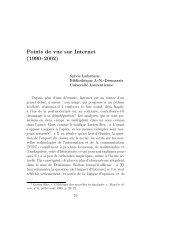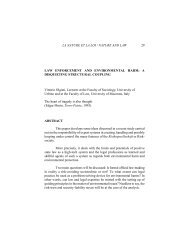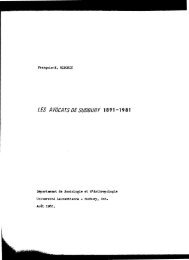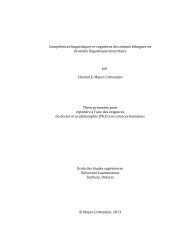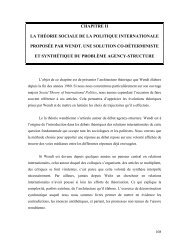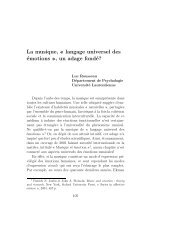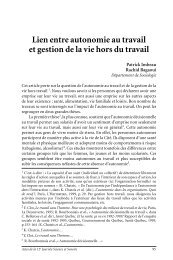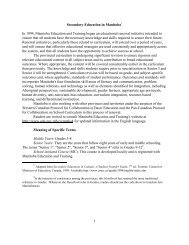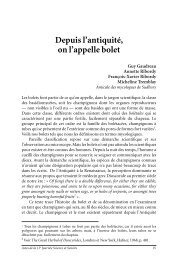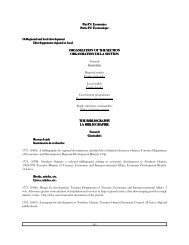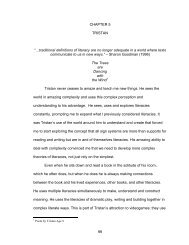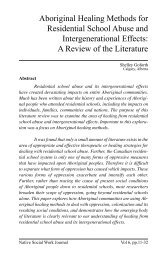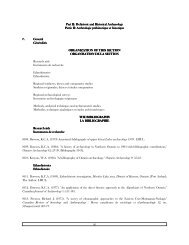NSERC grants at Laurentian University Subventions du CRSNG `a l ...
NSERC grants at Laurentian University Subventions du CRSNG `a l ...
NSERC grants at Laurentian University Subventions du CRSNG `a l ...
- No tags were found...
You also want an ePaper? Increase the reach of your titles
YUMPU automatically turns print PDFs into web optimized ePapers that Google loves.
55Hoyun LeeDetermining the hamster Cdc7 and Dbf4 amino acid resi<strong>du</strong>esth<strong>at</strong> are required for kinase activityA grant of $25,000 per year.Une subvention de 25 000 $ par année.Discovery Grant – Subvention à la découverteThe cell division process in a normal cell is tightlyregul<strong>at</strong>ed and closely coordin<strong>at</strong>ed with copying ofits genetic m<strong>at</strong>erial (DNA). It is thought th<strong>at</strong> twoproteins, called Cdc7 and Dbf4, are involved in coordin<strong>at</strong>ingthe cell division and DNA replic<strong>at</strong>ion processes.These two proteins, which function as a complex,may act as a molecular switch for DNA replic<strong>at</strong>ion.A cell has to turn on DNA replic<strong>at</strong>ion whenit needs to divide. However, if the replic<strong>at</strong>ion machineryis turned on while the cell is not yet ready,it may die or become genetically unstable. A cell can turn off its replic<strong>at</strong>ionmachinery when it faces a crisis, caused usually by genotoxic agents suchas radi<strong>at</strong>ion or DNA-damaging chemicals. Accumul<strong>at</strong>ing lines of evidencesuggest th<strong>at</strong> the turn-on or -off control mechanism is directly regul<strong>at</strong>ed byassoci<strong>at</strong>ion or dissoci<strong>at</strong>ion of Cdc7 with the regul<strong>at</strong>ory subunit Dbf4, andindirectly by changing the loc<strong>at</strong>ion of either or both the proteins within thecell. These control mechanisms may be regul<strong>at</strong>ed by the modific<strong>at</strong>ions of certainCdc7 and/or Dbf4 amino acid resi<strong>du</strong>es. To further study this biologicallyimportant control mechanism in mammalian cells, we have cloned hamsterCdc7 and Dbf4. Using a hamster model, we propose to study the followingtwo specific areas.First, we want to identify the hamster Cdc7 amino acid resi<strong>du</strong>es th<strong>at</strong>are required for Cdc7 activity and the binding of Cdc7 with Dbf4, both ofwhich are essential for the activ<strong>at</strong>ion of DNA replic<strong>at</strong>ion. Second, we want todetermine the hamster Cdc7 and Dbf4 amino acid resi<strong>du</strong>es th<strong>at</strong> are crucialfor subcellular localiz<strong>at</strong>ion, which is important for determining how Cdc7activity is regul<strong>at</strong>ed in a living cell.




